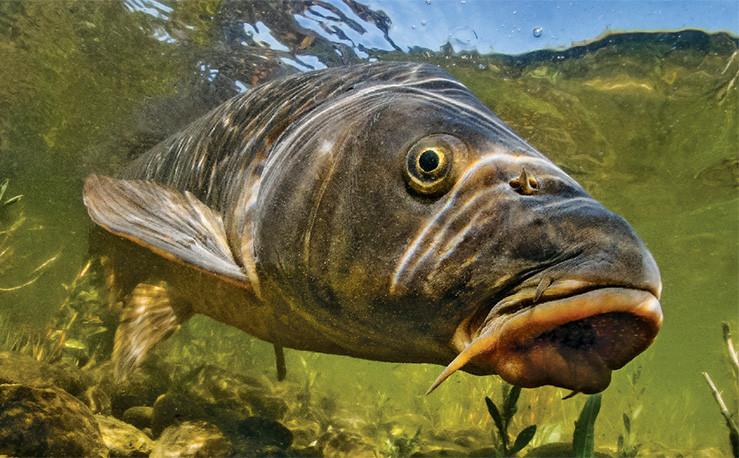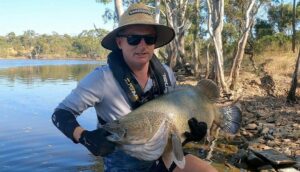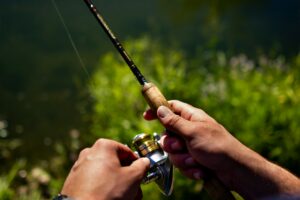
- Scientific Name
- Cyprinus carpio
General Description
Carp were introduced into Australia over 100 years ago. They are a pest fish species which cause major damage to the quality of inland waterways as well as native fish populations.
Currently making up 80 per cent of the fish biomass in many Australian waterways, carp are considered to be the worst freshwater pest in south-eastern Australia. They are present in every state or territory in the country – excluding the Northern Territory. Carp are extremely prevalent in the Murray-Darling Basin and are a dominate species with the carp populations exceeding 350 kilograms per hectare in some areas.
Some of the main environmental, social and economic impacts of carp include:
- Water quality
Carp are bottoms feeders and stir up mud and sediments as they feed which has a negative effect on water clarity by making it muddy. This impacts the amount of sunlight which the aquatic vegetation is exposed to and sediment then covers the vegetation and native fish eggs which can impact food sources and reproduction of native fish. Carp also increase the nutrient levels in the water which may also cause outbreaks of toxic blue-green algae blooms in the waterways. They may reduce habitat and food for native fish, waterbirds and invertebrates. - Native fish populations
Female carp can produce up to one-million eggs per year, they grow quickly, mature early and can tolerate extreme conditions including temperature changes and water quality. Carp can out-compete native freshwater fish species which has an adverse effect on native fish populations. - Fishing opportunities
Recreational fishers often see carp as getting in the way of the natives they really want to catch while out for a fish. - Irrigation
Carp, especially juveniles, can block irrigation pumps and other farming equipment which cause loss of time and maintenance costs for agriculture businesses and farmers.
Fishing Rules
There are no size limits or bag limits for European carp. They are considered as a Noxious Species and must not be returned to the water alive. Carp must be killed immediately. Fishers are reminded not to leave the dead fish on shore at the fishing location. The Victorian Fisheries Authority (VFA) recommend returning dead carp to the water and cutting the carcass so that it sinks. For further information visit the VFA’s Carp webpage.
Threats and Management Issues
NATIONAL CARP CONTROL PLAN
The National Carp Control Plan (NCCP) aims to explore the possible release of the carp virus, Cyprinid herpesvirus 3 (CyHV-3 or carp herpesvirus) to drastically reduce the number of carp in our waterways. Researchers have tested the effects of the carp herpesvirus on 13 native fish species, chickens, mice, frogs and turtles and found that it does not cause harm for these other species. The virus is highly contagious and is mostly transferred through carp-to-carp contact. The virus can also be spread via water when a carp swims within the same waterbody as an infected carp and can be active in the water for up to three days. The ideal temperatures for the virus to show signs of disease in the fish are between 18 and 28 degrees- celsius.
At the end of 2018, the completed NCCP will be provided to the Australian Government and a formal recommendation will be made regarding the best method to control carp in Australia by the Fisheries Research and Development Council (FRDC).
For more information download the National Carp Control Plan Factsheet.
The NCCP are conducting a CARPMAP survey where the Australian public record where they have seen carp aggregating in high numbers to plan future carp control programs.
Below is an interview from the National Carp Control Plan’s Riverside Stories with VRFish Executive Officer, Michael Burgess. Where he talks about the high level of community interest in controlling carp to support native fish recovery across the state.






